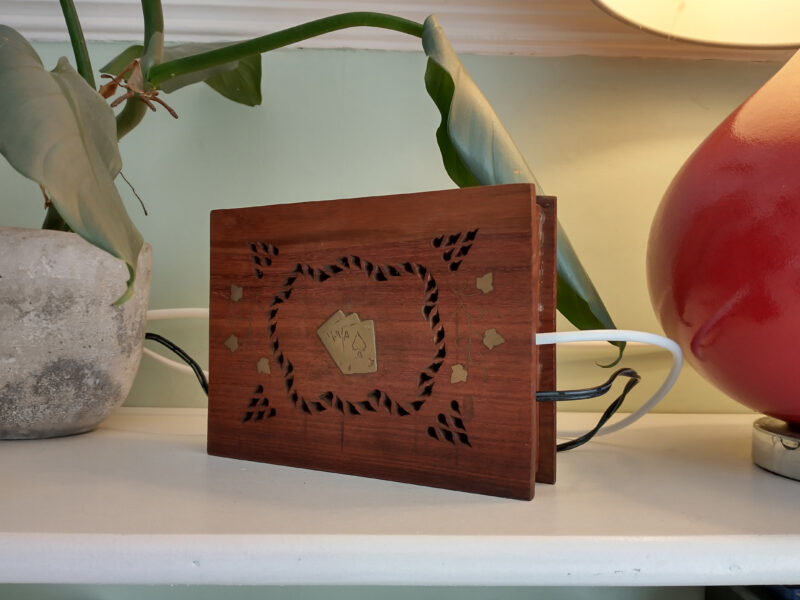
“A shadow is a dark area where light from a light source is blocked by an opaque object. It occupies all of the three-dimensional volume behind an object with light in front of it. The cross section of a shadow is a two-dimensional silhouette, or a reverse projection of the object blocking the light.“
https://en.wikipedia.org/wiki/Shadow
During the nation lockdown in March 2020, due to COVID19, I made a 26 minute long video work that used Google Street View to chart the road journey between two main points of arrival and departure in the city in which I live, Liverpool. The journey travels past the end of the road that I live on. In my home there is a shelf with a wooden box on it. Inside this box is a Raspberry Pi 3b. This small computer serves the video and website to the internet at the address newphysical.world. The server case was bought from ‘Mini Amsterdam,’ a head shop along the route, and is a box for holding weed paraphernalia.


In my PhD research I had become interested in ways of working that challenged the exclusive nature of networks. Networks are, after all, things that connect other things, but by necessity have to exclude others. The basic question being asked was ‘how can I trouble this exclusivity?’ Ian Bogost’s writing around ontographs and lists in Alien Phenomenology had given me a way of thinking about creating networks that had no connections other than proximity. Does this proximity even constitute connection? I began to think that it did. This started me thinking about PowerPoint slideshows and working with image sequences, how the presenter provides the links to give meaning. Stuck at home during lockdown, I began to see Google Street View as a potential slideshow, presented by a corporation, given meaning through supermarkets, cash points, petrol stations and so on. In trying to produce a less exclusive network, could I intervene and propose an alternative to Google’s view of the world as a commercial directory? With this in mind I made the video, then, along the journey though these Street View images, began to highlight objects, of no particular type or class, then paused the video, searched Google again, and extracted a description of this object. This description was then added to the video.
This work, and writing around it, formed the final chapter of my PhD. The first two chapters looked at networks at smaller scales. Firstly, a disconnected and ‘air gapped’ network, as explored in the isolated forest of Glen Nevis, and secondly, a local network, as explored in the station garden network built at Edge Hill Station here in Liverpool. What was telling about both of these examinations of networks was how, once you start to pay them attention, you begin to see their exclusivity, how much could be in but is often left out. Project for a New Physical World attempts, in an already doomed way, to include more without trying to organise it too much, and create a momentary speculative network.
The title, by the way, comes from a line in Peter Greenaway’s faux documentary film Vertical Features Remake, which basically charts several unsuccessful efforts by a team of academics to reconstruct found footage from a visionary auteur’s ‘Project for a New Physical World’ in which he attempts to the creation ‘of a dymanic landscape’ through film, and also fails.
